This article is part of the Hidden Architecture Series “Tentative d’Épuisement”, where we explore the practice of an architectural criticism without rhetoric and based mainly on the physical experience of the work itself.
Este artículo forma parte de la serie “Tentativa de Agotamiento”, comisariada por Hidden Architecture, donde exploramos la práctica de una crítica arquitectónica ausente de retórica y fundamentada sobre todo en la experiencia física de la propia obra.
***
I should have learned to recognise each of these trees, but I never paid enough attention to those classes. Pines, cedars, pines, cedars, pines… a spruce? At their feet, the earth is damp, almost waterlogged at one point. The grass does not grow in the areas that are always in the shade, revealing a bare earth, dark as coal. The day is hot, humid. It is still early, but the clothes stick to the sweat on our backs as we climb a path that crowns a wrecked hill in the middle of the urban fabric of the university campus. The air is a little cool, when it blows, and so reminds us that, despite this August sun, the waters of the Baltic oscillate, calm today, very close to here. The branches fan the bunches of thorns, producing a low hooting sound. No birds can be seen around the canopies, but the vigorous singing of a few individuals betrays their games of leaping and chasing. If I closed my eyes, I could smell your fresh presence, take refuge in your shadow and chase the musical din of your inhabitants; then doze off, rocked by your swaying in the air. I don’t know your name but, tell me, does that detail quench my desire to lose myself in you?
Debería haber aprendido a reconocer cada uno de estos árboles, pero nunca presté la atención suficiente a aquellas clases. Pinos, cedros, pinos, cedros, pinos… ¿un abeto? A sus pies, la tierra está húmeda, casi encharcada en algún punto. El césped no crece en las zonas que permanecen siempre a la sombra, mostrando así una tierra desnuda, oscura como el carbón. El día es caluroso, húmedo. Aún es temprano, pero la ropa se pega al sudor de la espalda mientras ascendemos por un camino que corona una loma naufragada en medio del tejido urbano del campus universitario. El aire es algo fresco, cuando sopla, y nos recuerda así que, a pesar de este sol de agosto, las aguas del Báltico oscilan, hoy tranquilas, muy cerca de aquí. Las ramas abanican los ramilletes de espinas produciendo un grave ulular. No se ven pájaros en torno a las copas, pero el canto vigoroso de algunos individuos delata sus juegos de saltos y persecuciones. Si cerrara los ojos, podría oler tu presencia fresca, refugiarme en tu sombra y perseguir la algarabía musical de tus habitantes; después dormitar mecido por tu balanceo en el aire. No conozco tu nombre pero, dime, ¿apaga ese detalle mi deseo de perderme en ti?


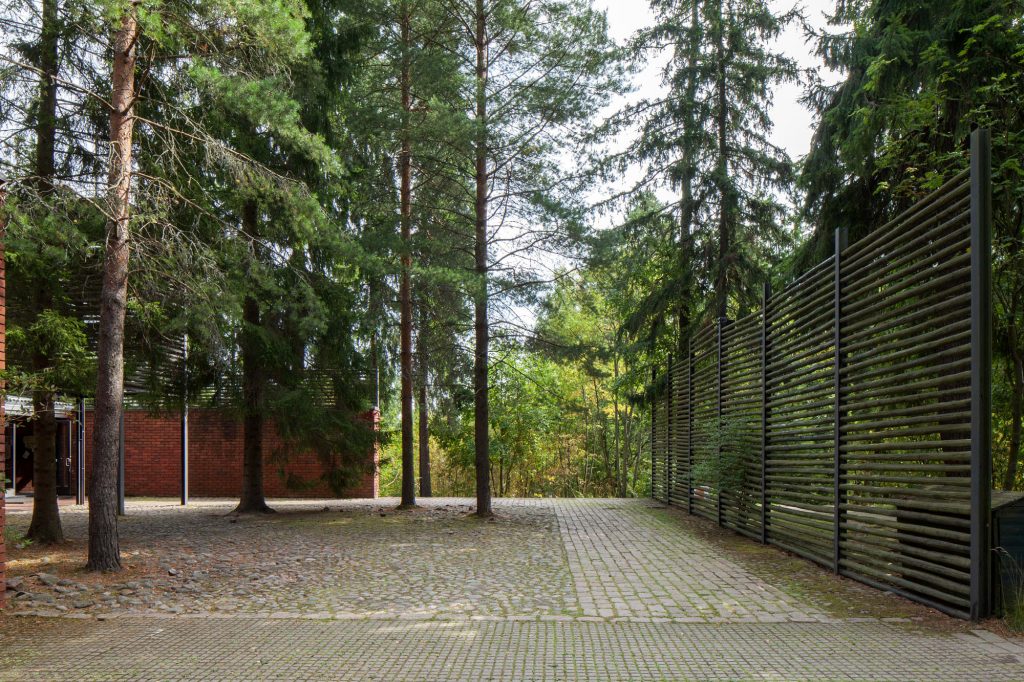
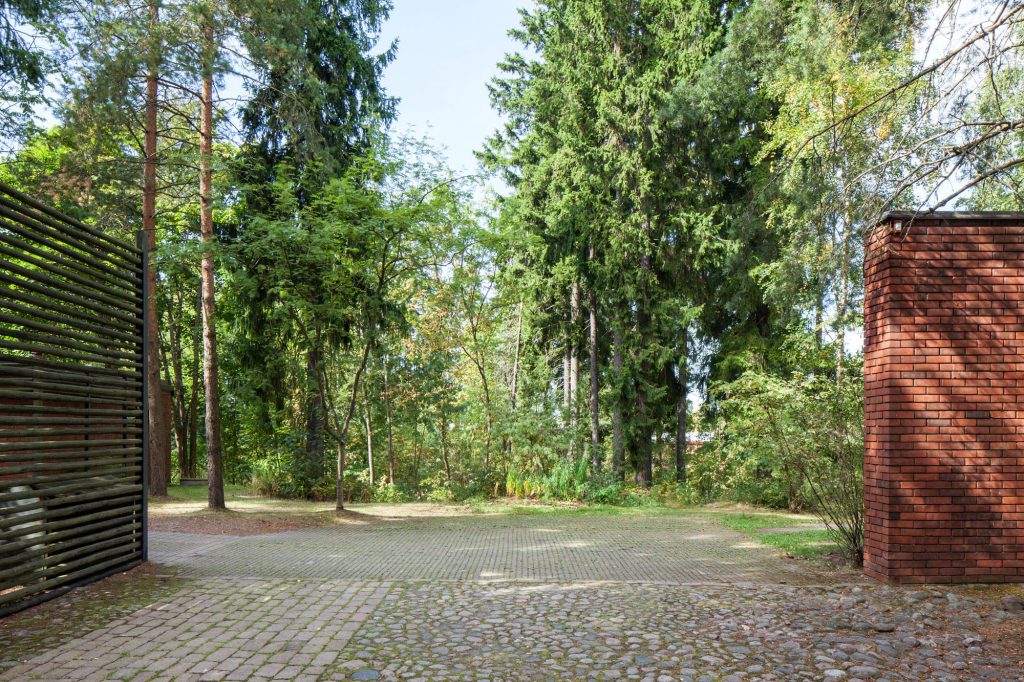
Her hair is tied back with an orange ribbon. Her arms, pressed tightly to her chest, clutch a pair of large books. He smiles as he recognises someone sitting in the back rows of the bus, which is already disappearing around the corner. A blind brick wall is visible between thin, slender trunks, some erratic in their straightness like stork’s legs. The brick wall, about three metres high, maybe four, looks like a linen canvas, picking up the shadows of the trunks on its surface like thick, vibrant brushstrokes. In other regions, the presence of such a wall would betray the existence of a rich inner courtyard, perhaps of lemon trees with branches drooping under the weight of their fruit; and of a stream of water gushing from a shiny spout splashing on the ground. One, two, three sparrows now; they perform a graceful dance, cooling their plumage in the water.
Lleva el pelo recogido con un lazo naranja. Los brazos, apretados contra el pecho, sujetan con fuerza un par de libros de gran tamaño. Sonríe al reconocer a alguien sentado en las últimas filas del autobús que ya desaparece tras girar la esquina. Una tapia ciega de ladrillo se divisa entre troncos finos y esbeltos, erráticos algunos en su rectitud como patas de cigüeña. El muro de ladrillo, de unos tres metros de altura, quizá cuatro, parece un lienzo de lino que recoge en su superficie las sombras de los troncos como pinceladas gruesas y vibrantes. En otras regiones, la presencia de una tapia así delataría la existencia de un rico patio interior, quizá de limoneros de ramas abatidas por el peso de sus frutos; y de una corriente de agua brotada de un caño brillante estampando salpicaduras en el suelo. Uno, dos, tres gorriones ahora; ejecutan ágiles una simpática danza refrescando su plumaje en el agua.
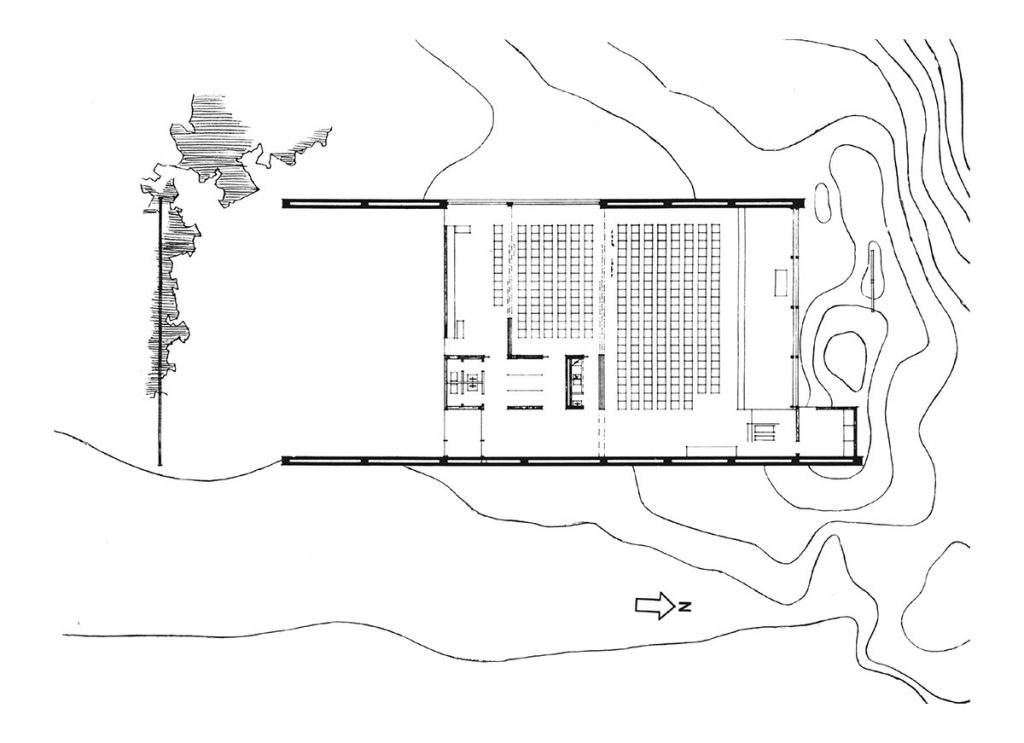

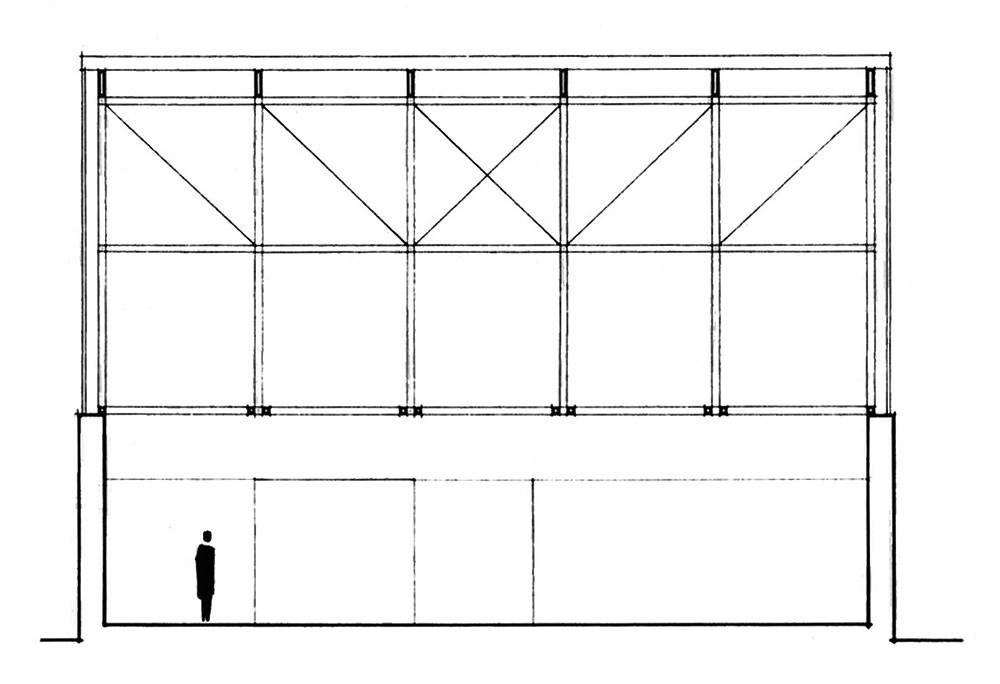


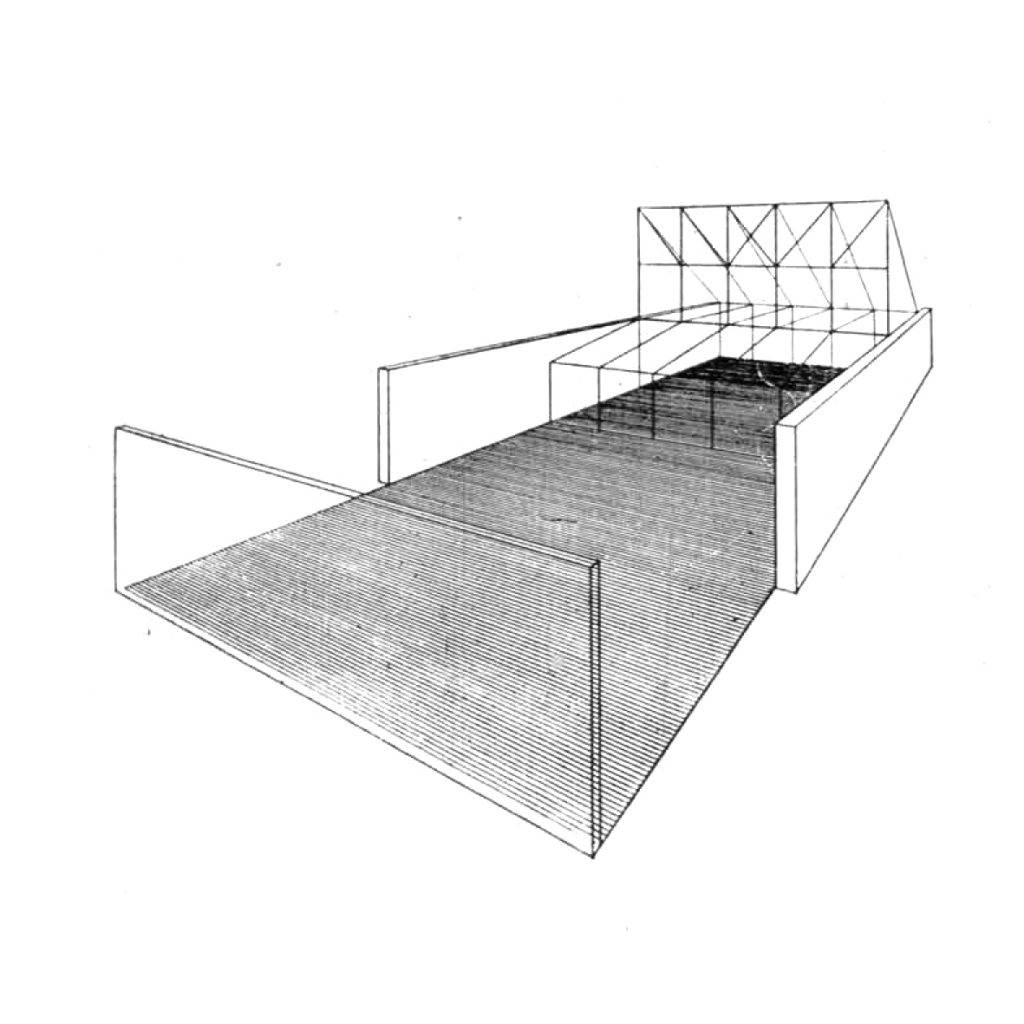
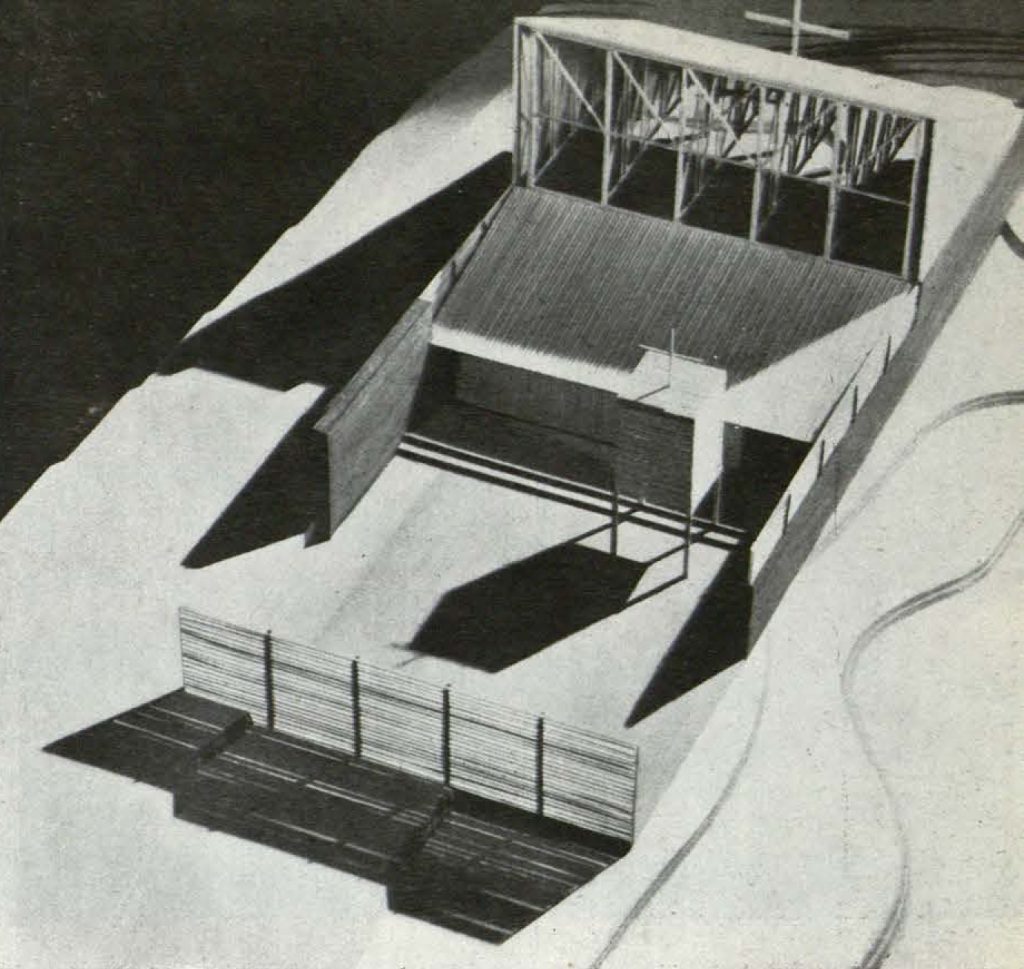
And yet no lemon trees can grow here. In fact, the brick wall does not even contain a space closed off from the world to look up to the sky. It is a solitary canvas drawn on the earth like a straight line that violently separates these nameless trees from a land stripped of them. A cascade of wide but very low steps interrupts the brick wall. With a joyful cadence I leap over the obstacle in five jumps, stop and undo my movements to repeat them. There is something tremendously pleasurable in this act of advancing upwards, of entering without ceasing to be outside, of sheltering in an enclosure that is open. The steps, which must be about ten metres wide, define with sensual simplicity the access to a space that has by no means been taken from the forest. Even if it looks like it. However, these brick canvases and one of horizontal, dead, recumbent trunks have been placed to signify a change of state. The forest is ethereal, but on entering here it condenses like dewdrops on the petals of a carnation. The forest does not cease to be a forest, but now it is also a place where a human community gathers in silence.
Y sin embargo, aquí no pueden crecer limoneros. De hecho, la tapia de ladrillo ni siquiera contiene un espacio cerrado al mundo para alzar la vista al cielo. Es un lienzo solitario que trazado sobre la tierra como una línea recta separa con violencia estos árboles sin nombre de un terreno de ellos despojado. Una cascada de escalones anchos, pero muy bajos, interrumpe el muro de ladrillo. Con cadencia alegre salvo de cinco saltos el obstáculo, me detengo y deshago mis movimientos para volver a repetirlos. Hay algo tremendamente placentero en este acto de avanzar ascendiendo, de entrar sin dejar de estar afuera, de cobijarse en un recinto que está abierto. Los escalones, deben de rondar los diez metros de anchura, definen con sensual sencillez el acceso a un espacio que no ha sido en absoluto arrebatado del bosque. Aunque lo parezca. Se han colocado, sin embargo, estos lienzos de ladrillo y uno de troncos yacentes, muertos, horizontales, para significar un cambio de estado. El bosque es etéreo, pero al acceder aquí se condensa como gotas de rocío en los pétalos de un clavel. El bosque no deja de ser bosque, pero ahora es también un lugar donde una comunidad humana se reúne en silencio.

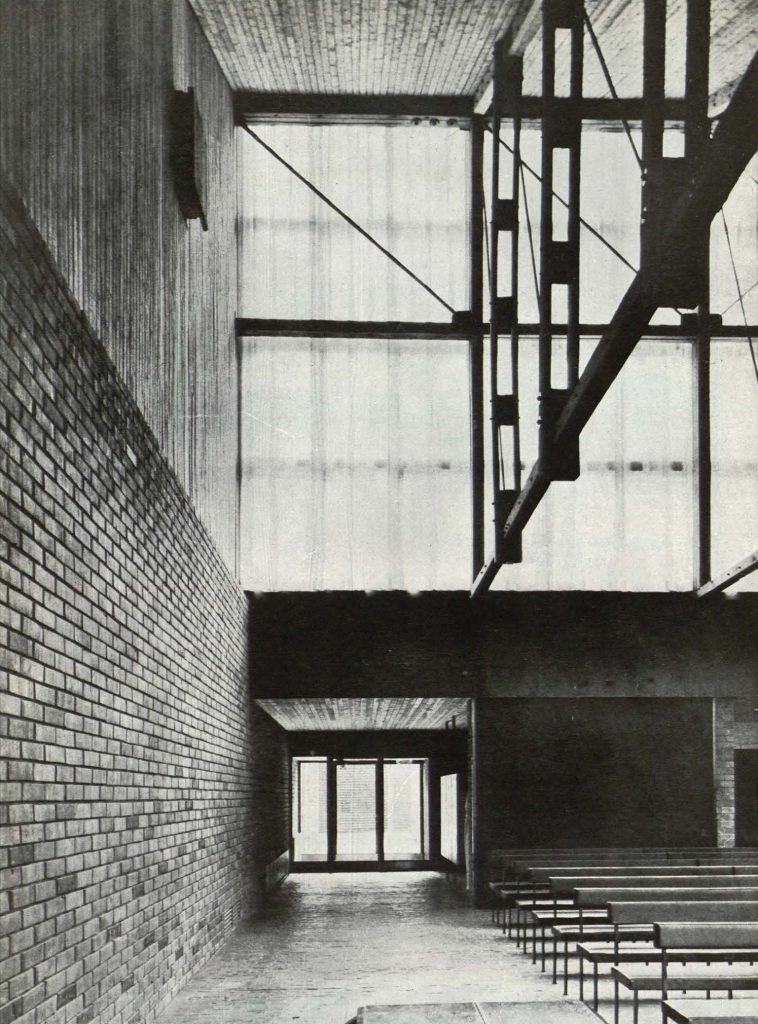

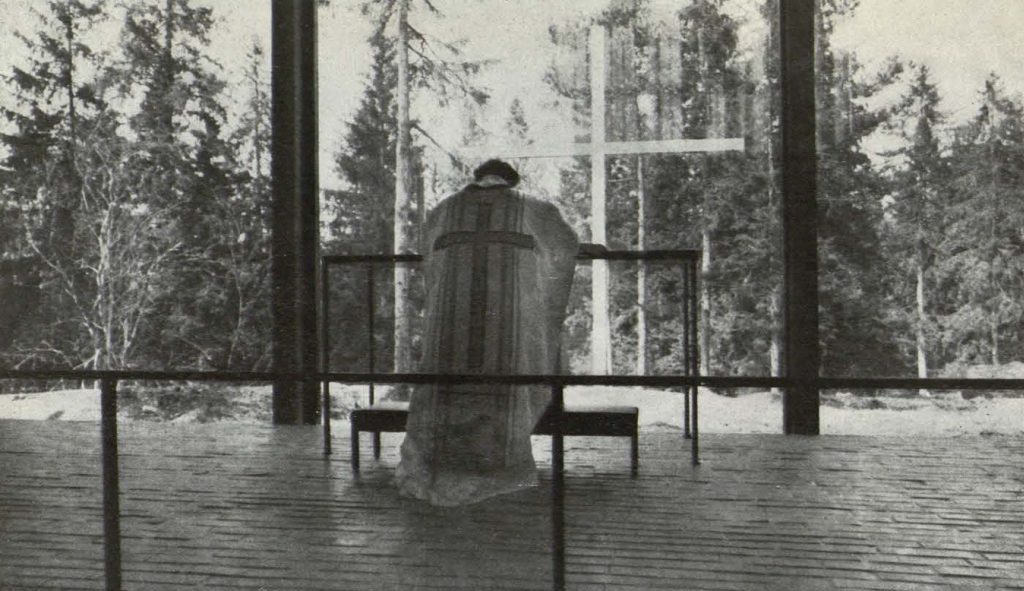
It’s a courtyard, yes, why deny it? I called a cedar a pine for the bitter depth of its freshness, let us agree to call this portion of fenced forest through which I now walk a courtyard. Courtyard or forest, forest and courtyard, it comforts to hesitate so much just to name it. Six planes. The upper one, very easy, is today’s clear sky that will soon be overcast. The lower one I’m stepping on. Cut granite cobblestones, volumetrically defined by being pulled out of the earth, with three different geometries. I look at each of them. Four by four centimetres, a line of ants walk along them towards an uncertain destination; they don’t raise their heads, this one seems to smell me, tracing with rigorous order a quick path for the most important human path. That is, from the forest to the forest bathed in light that is the chapel. Ten by sixteen centimetres, at the head of the platoon a wasp, dropped in flight, is hoisted by a squad of ants, defining an area of retreat. A retreat from the forest, a retreat from the covered forest where people meet; a retreat next to the wall of logs that stacked together let the wind whistle through them. Finally, and of irregular geometry, its rounded forms seem to be taken from a riverbed, the clearing through which one does not pass. Its organic outline is interrupted by some trees that were left on this side of the forest, when the walls were raised and the steps unfolded to welcome us. Next to the door, the ants introduce the inert body of the wasp, which has already begun to be dismembered, through the hole in the anthill.
Es un patio, sí, ¿por qué negarlo? Llamé pino a un cedro por la profundidad amarga de su frescura, acordemos llamar patio a esta porción de bosque cercado por el que ahora camino. Patio o bosque, bosque y patio, reconforta dudar tanto solo para nombrarlo. Seis planos. El superior, muy fácil, es el cielo hoy despejado que no tardará en cubrirse. El inferior lo estoy pisando. Adoquines de granito cortados, definidos volumétricamente al ser arrancados de la tierra, con tres geometrías diferentes. Repaso con la mirada cada una de ellas. Cuatro por cuatro centímetros, una hilera de hormigas camina por ellos rumbo a destino incierto; no levantan la cabeza, ésta sí, parece olerme, trazando con orden riguroso una rápida senda para el camino humano más importante. Es decir, desde el bosque al bosque bañado de luz que es la capilla. Diez por dieciséis centímetros, a la cabeza del pelotón una avispa, caída en vuelo, es izada por una cuadrilla de hormigas, definiendo un área de retiro. Un retiro del bosque, un retiro del bosque cubierto donde la gente se encuentra; un retiro junto al muro de troncos que apilados dejan pasar el viento silbando entre ellos. Por último, y de geometría irregular, sus formas redondeadas parecen sacadas del lecho de un río, el claro por el que no se transita. Su trazado orgánico es interrumpido por algunos árboles que quedaron de este lado del bosque, cuando se levantaron las tapias y los escalones se desplegaron para recibirnos. Junto a la puerta, las hormigas introducen por el agujero del hormiguero el cuerpo inerte de la avispa, que ya ha empezado a ser desmembrada.
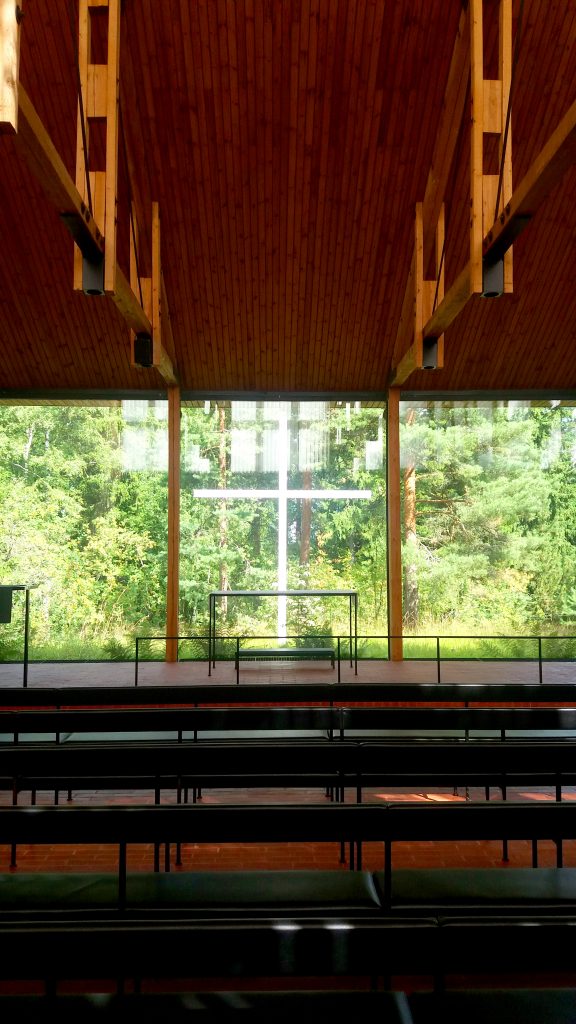
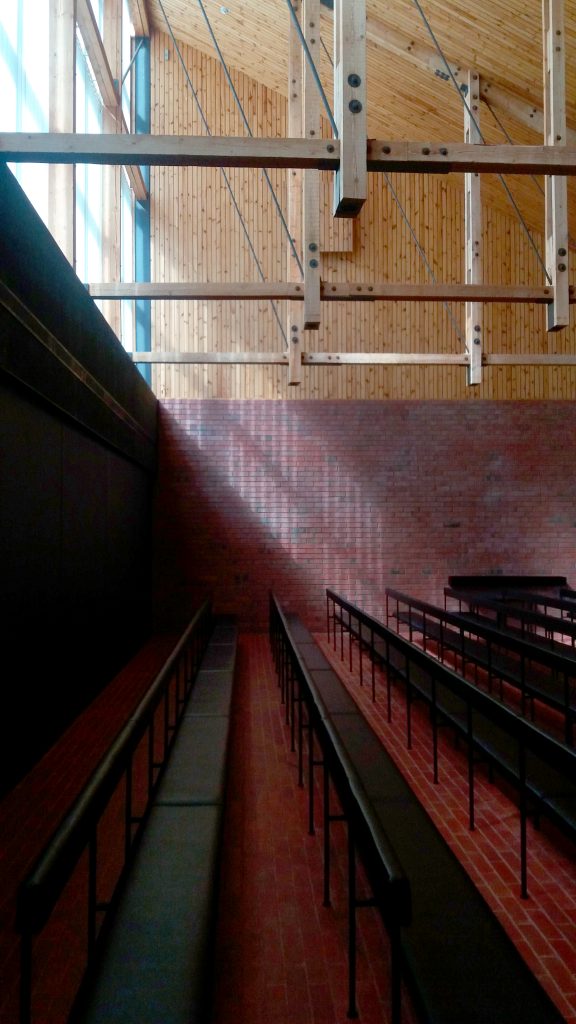
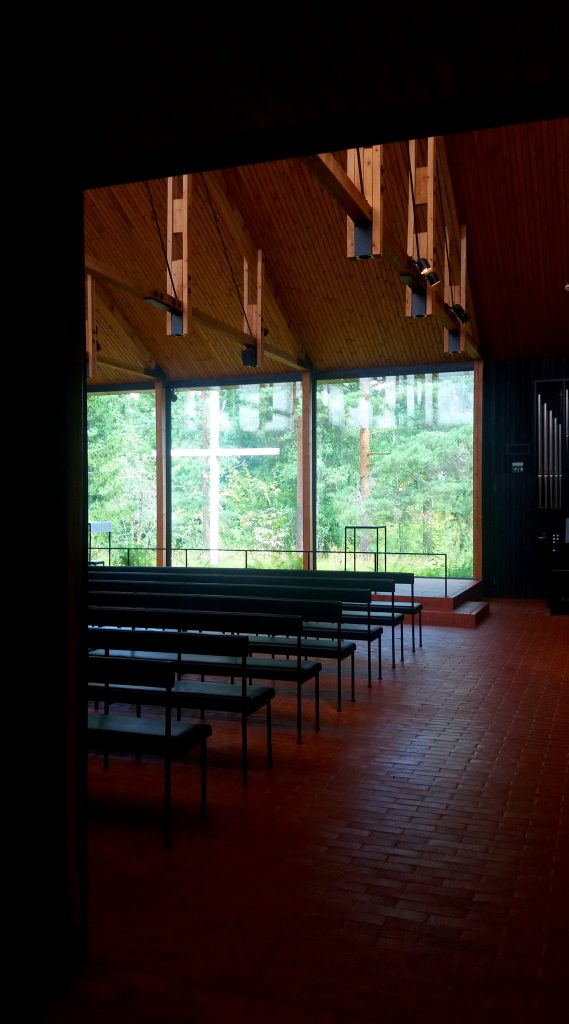
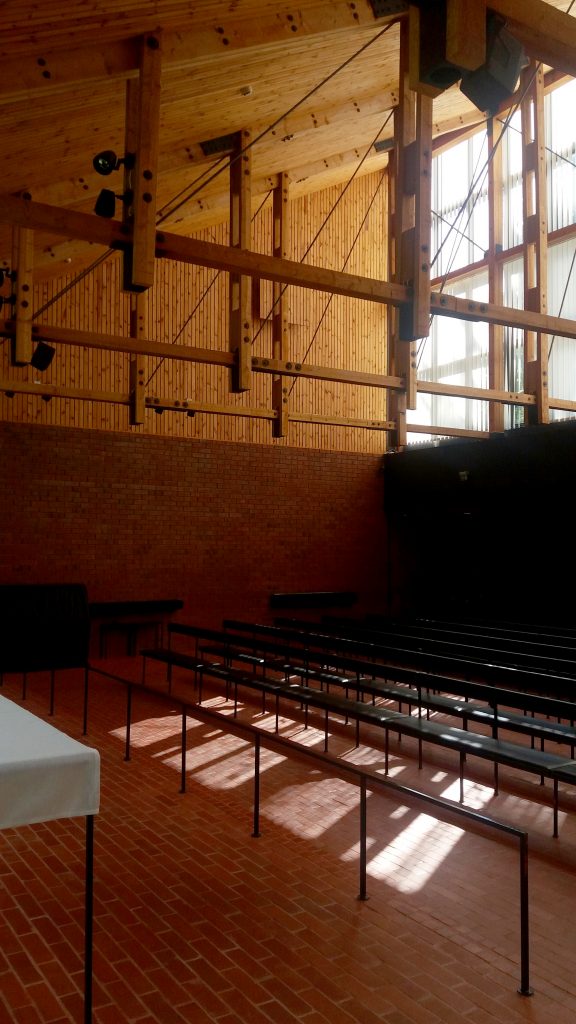
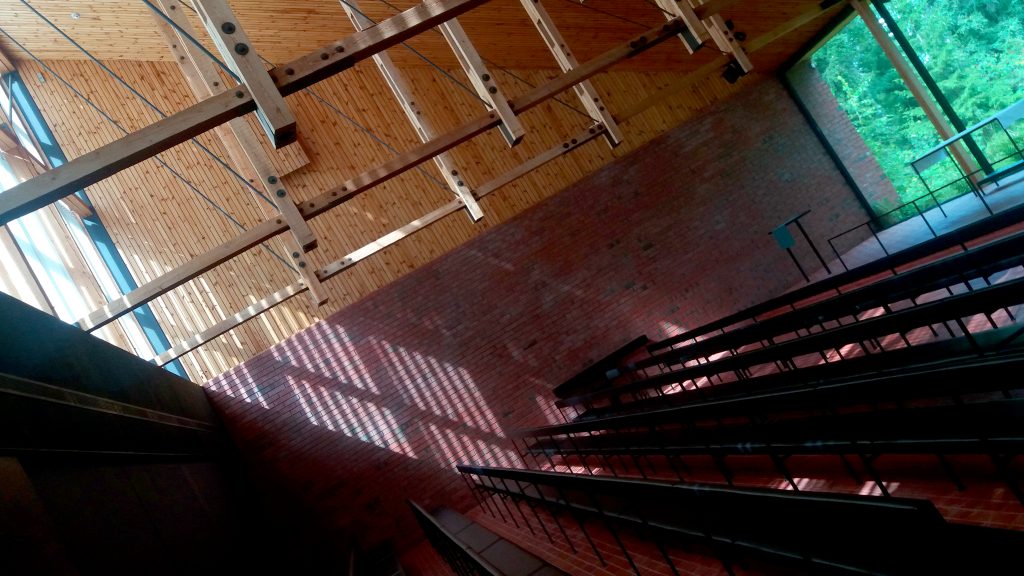
One, two, three, four; there are four trusses, maybe six if there are two hidden ones resting on the walls. Four, four trusses are visible. Their layout defines a section of triangular geometry; triangles which, seen in elevation, are divided into five sections of equal width by four uprights of variable length. A length that increases proportionally from that side, from the altar, to the opposite side, where we are now. One, two, three, four; pine wood assembled by metal joints, stabilised in the air by steel braces. One, two, three, four times, or six; thus arranged along a north-south axis, they define a steeply sloping roof that evacuates water and melted snow, water finally, towards the window which is altar and altarpiece at the same time. The light of a midday sun, exactly from the south, sharply enters through the opening left by the trusses on the brick wall behind us. At our feet, the pavement is ceramic brick and the darkness is dense. Above our heads, the incandescent rays penetrating the room freeze in the air each element of the trusses, suspended in mid-flight like porcelain dancers, inert but light.
Una, dos, tres, cuatro; son cuatro las cerchas, quizá seis si hay otras dos ocultas que se apoyan sobre los muros. A la vista quedan cuatro, cuatro cerchas. Su trazado define una sección de geometría triangular; triángulos que vistos en alzado se dividen en cinco tramos de igual anchura mediante cuatro montantes de longitud variable. Una longitud que se incrementa proporcionalmente desde aquel lado, desde el altar, hasta el opuesto y en el cual nos hallamos ahora. Una, dos, tres cuatro; madera de pino ensamblada por obra de uniones metálicas, estabilizada en el aire por tirantes de acero. Una, dos, tres, cuatro veces, o seis; así dispuestas a lo largo de un eje norte-sur definen una cubierta inclinada de pendiente acusada que evacúa agua y nieve derretida, agua finalmente, hacia la ventana que es altar y retablo al mismo tiempo. La luz de un sol de mediodía, exactamente desde el sur, entra afilada por la apertura que las cerchas dejan sobre el muro de ladrillo a nuestra espalda. A nuestros pies, el pavimento es de ladrillo cerámico y la oscuridad es densa. Sobre nuestras cabezas, los rayos incandescentes que penetran en la sala congelan en el aire cada elemento de las cerchas, suspendidas en mitad del vuelo como bailarines de porcelana, inertes pero livianas.
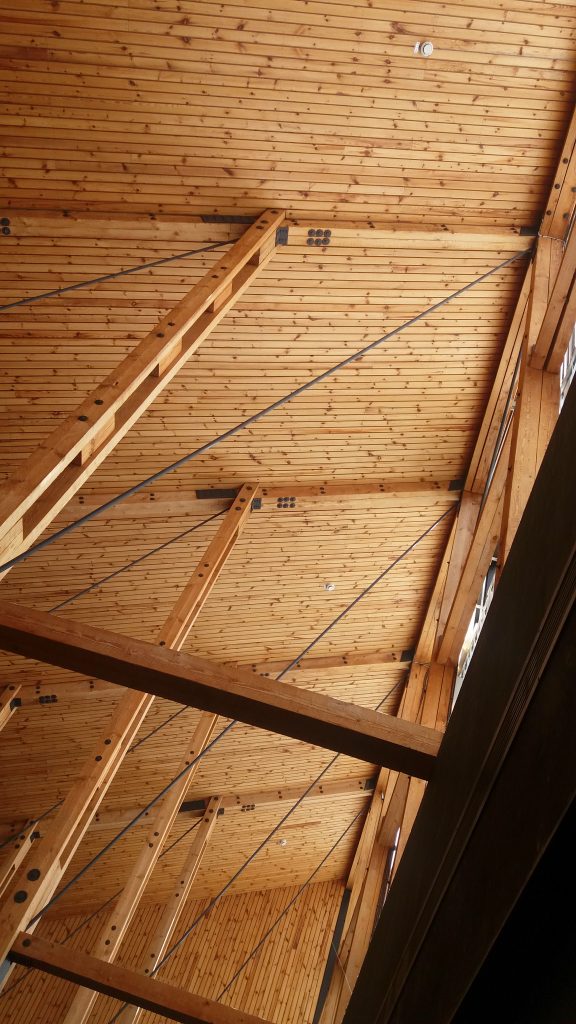

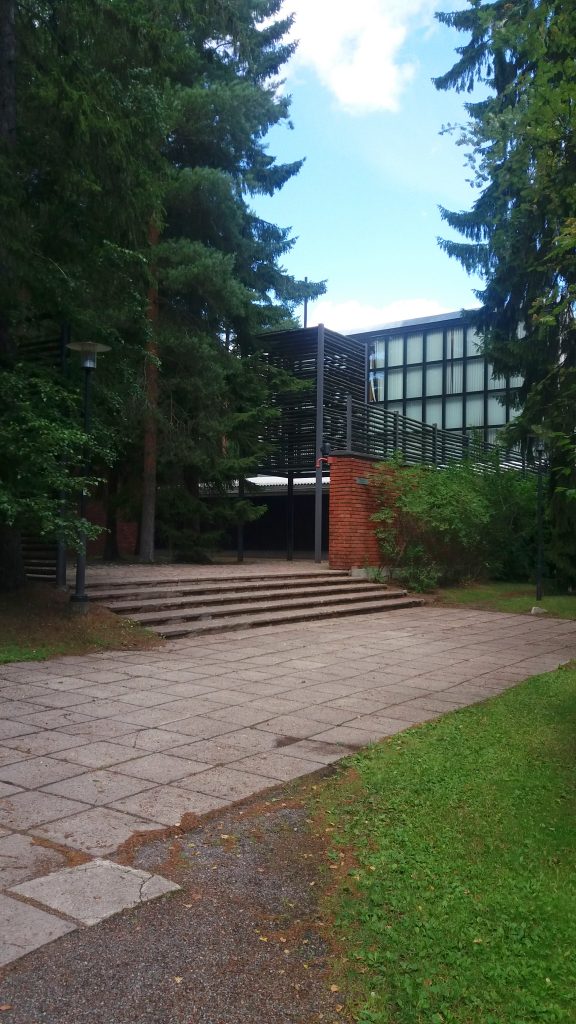
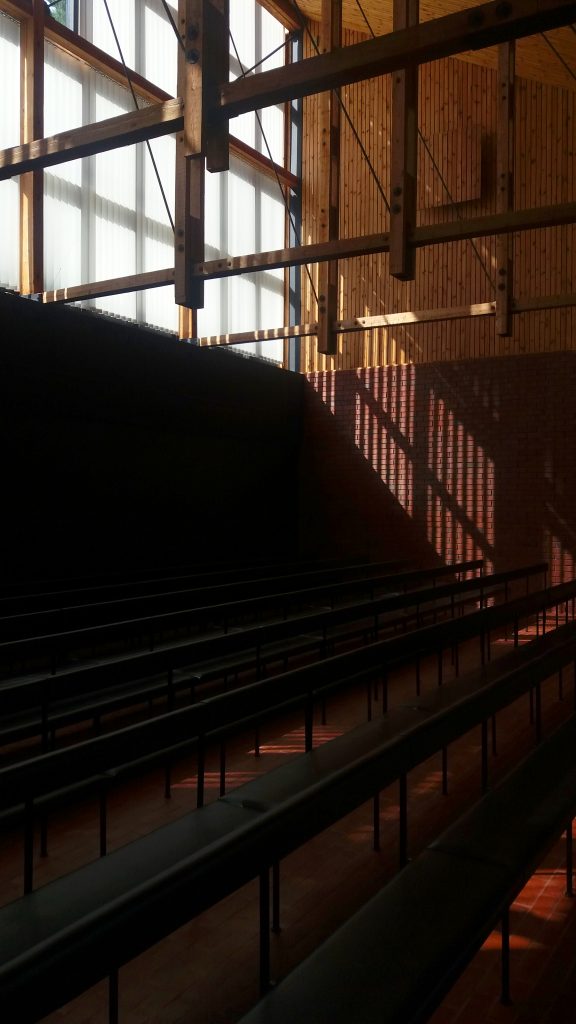
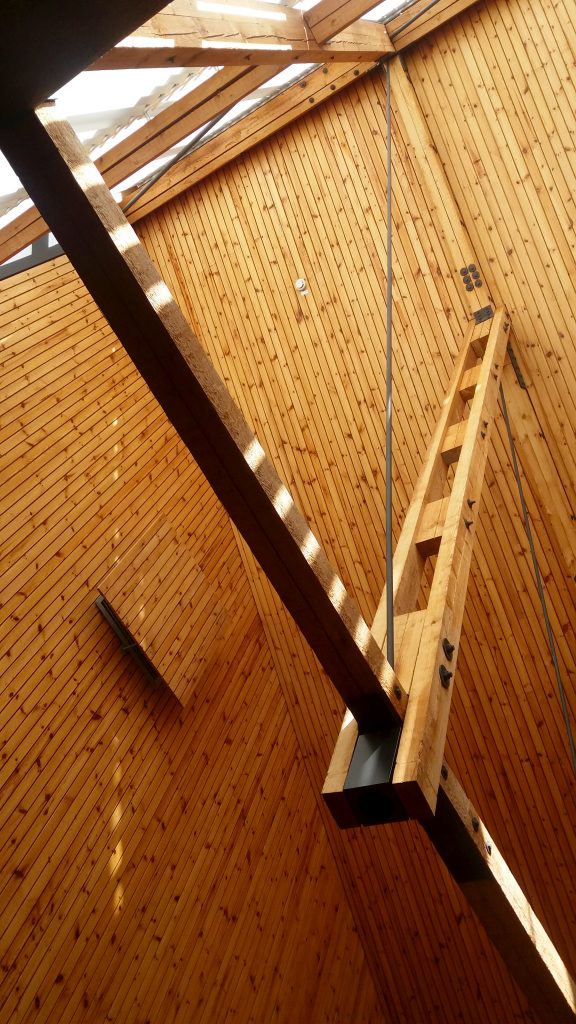
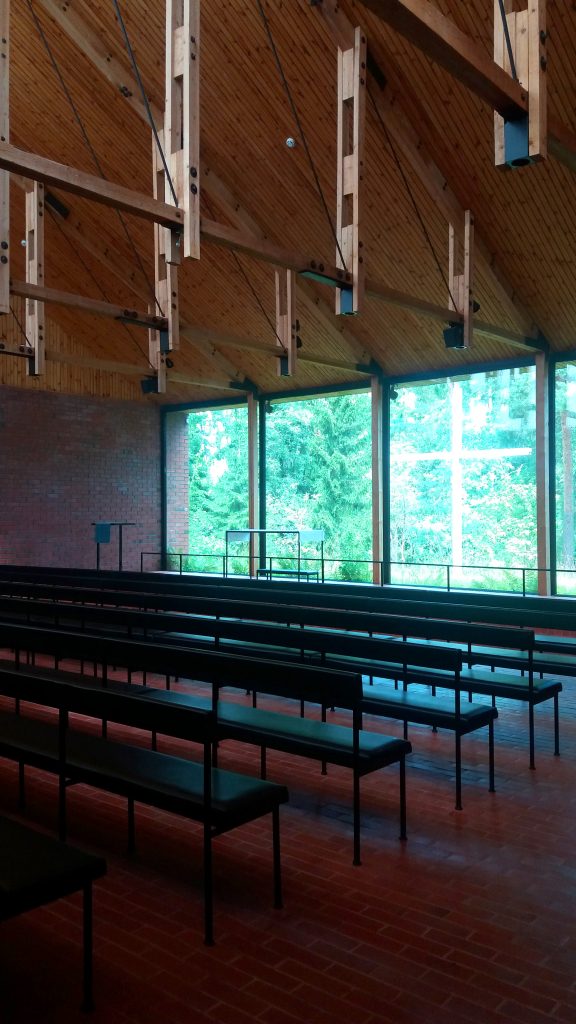
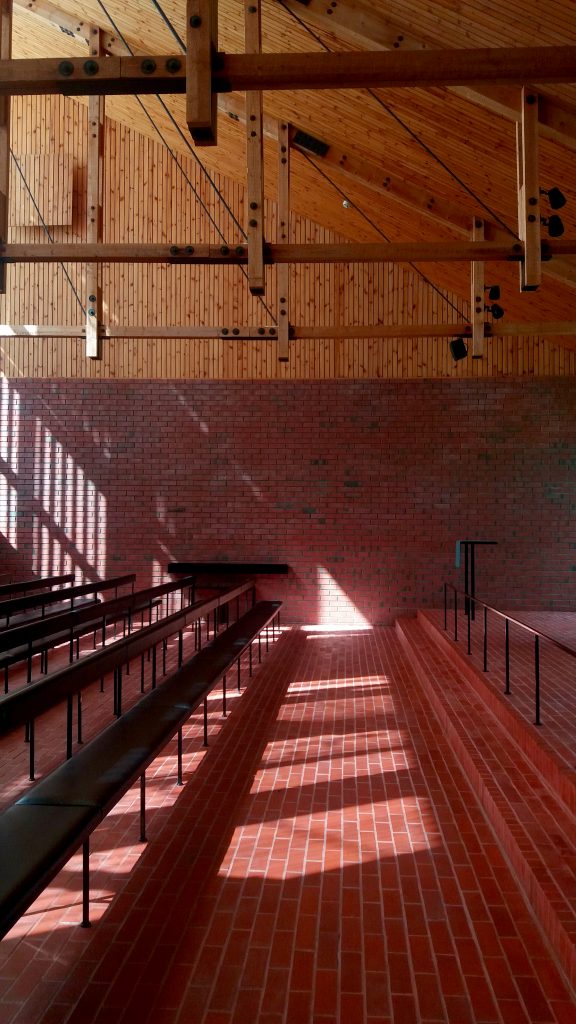
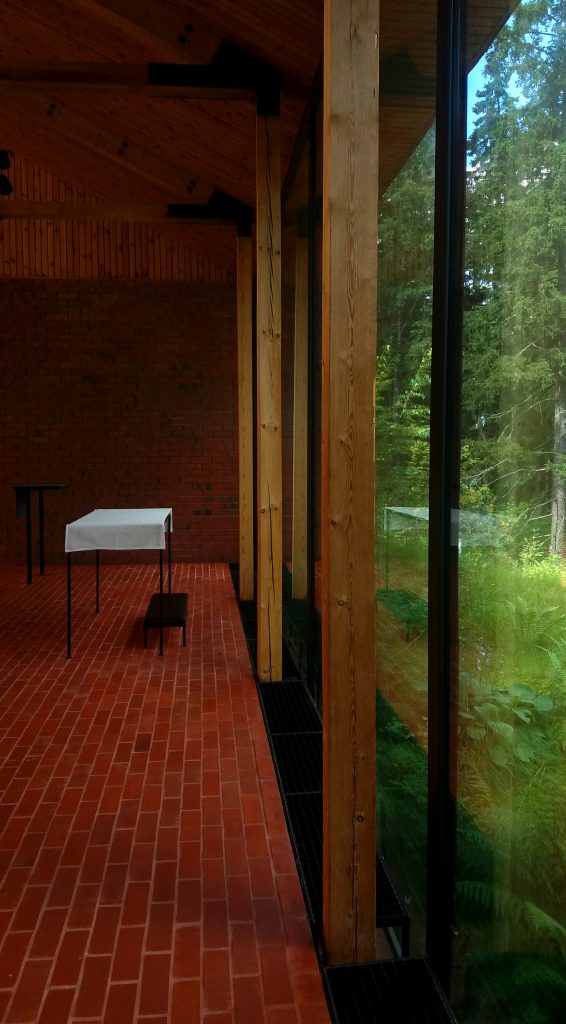
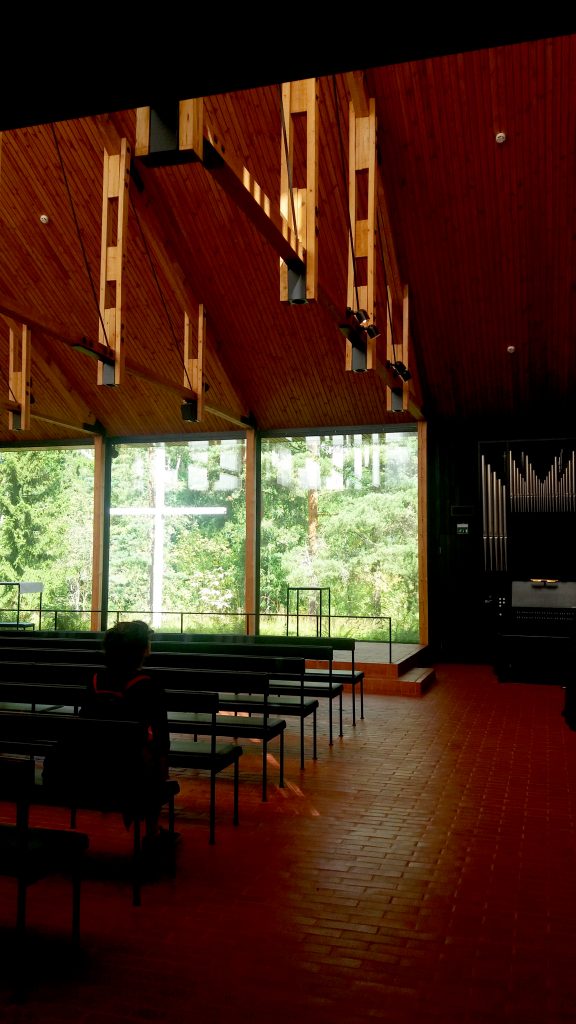
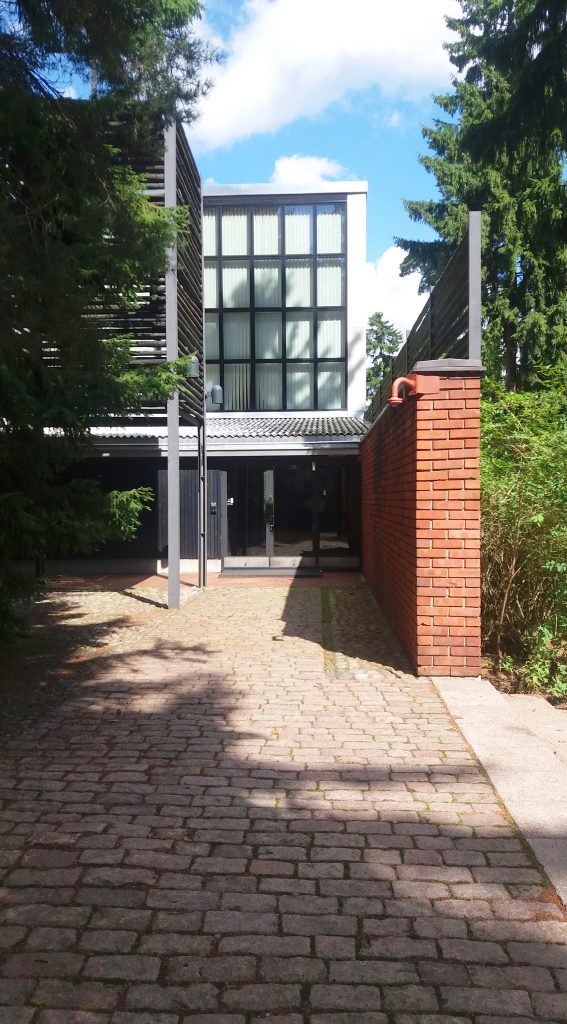
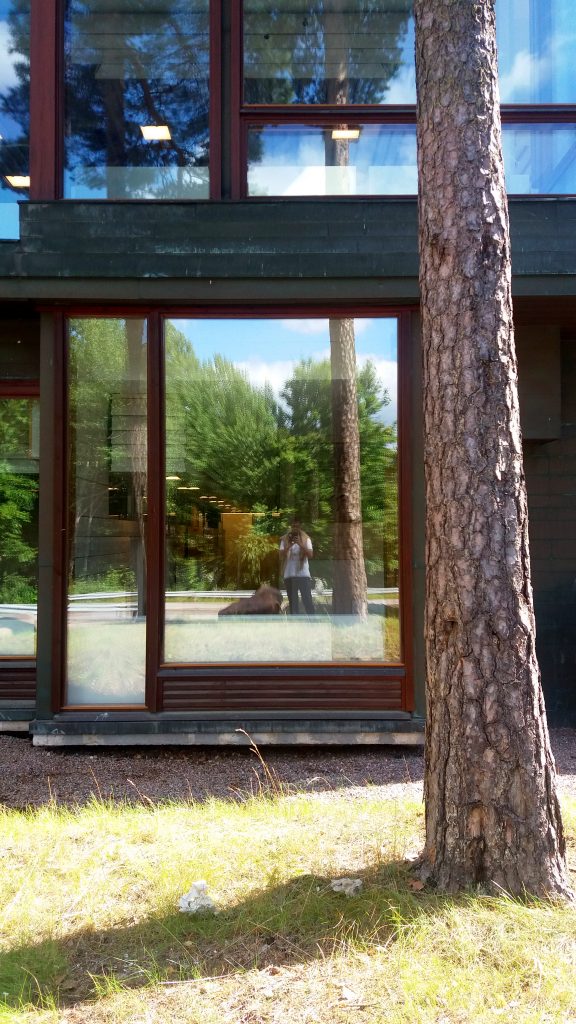
One, two, three, four, five, six and seven. Seven rows of pews shake hands facing the altar. I take a seat in the closest one: row three, first position. Its cool, smooth leather skin helps to balance my body temperature with that of the cooler air, giving me a fleeting sense of well-being. The silence makes me notice the trees outside, swaying to the rhythm of the gentle but stubborn arctic summer breeze. It’s no great discovery, such movements are evident when you stand in the middle of a forest and watch carefully. The trusses, the benches, the light. The arrangement of the different elements that make up this interval of domesticated woodland is analogous to those that might make up conventional spaces of Christian worship. The steps, the sight, the hearing and the attention are directed in a certain direction. Here, however, vision finds no limits, no rest, no surface to hold it. Distracted, it oscillates, now zigzagging, then stops. It pursues the illuminated song of the birds, carefully cradled by the highest branches of the trees outside; it loses itself at last among flashes of light and shadows of soil.
Uno, dos, tres, cuatro, cinco, seis y siete. Siete hileras de bancos se dan la mano orientándose hacia el altar. Tomo asiento en el más próximo: fila tres, posición primera. Su piel de cuero terso y frío contribuye a equilibrar mi temperatura corporal con la del aire más fresco, proporcionándome una efímera sensación de bienestar. El silencio me hace reparar en los árboles de fuera, meciéndose al ritmo de la suave pero obstinada brisa ártica de verano. No es un gran descubrimiento, este tipo de movimientos son evidentes cuando uno se encuentra en medio de un bosque y observa con atención. Las cerchas, los bancos, la luz. La disposición de los diferentes elementos que constituyen este intervalo de bosque domesticado es análoga a la de aquellos otros que pudieran componer espacios convencionales de culto cristiano. Los pasos, la vista, el oído y la atención se dirigen en un sentido determinado. Aquí la visión, sin embargo, no halla límites, no encuentra reposo ni superficie que la retenga. Distraída oscila, ahora en zigzag, se detiene después. Persigue el canto iluminado de los pájaros, cuidadosamente acunado por las ramas más altas de los árboles que están ahí fuera; se pierde al fin entre destellos de luz y sombras de tierra.
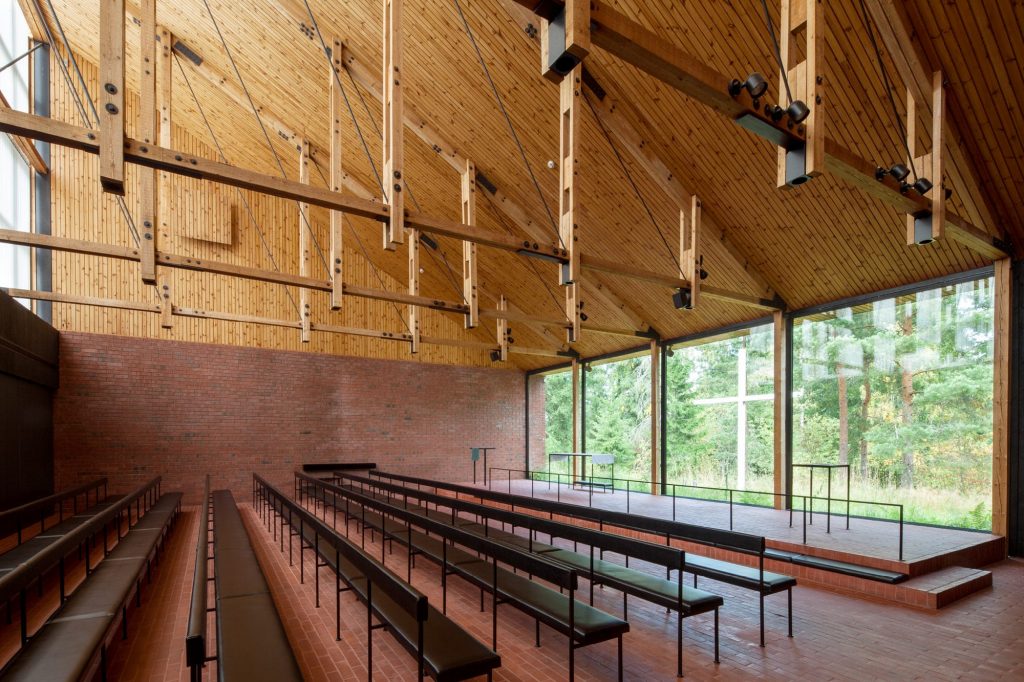
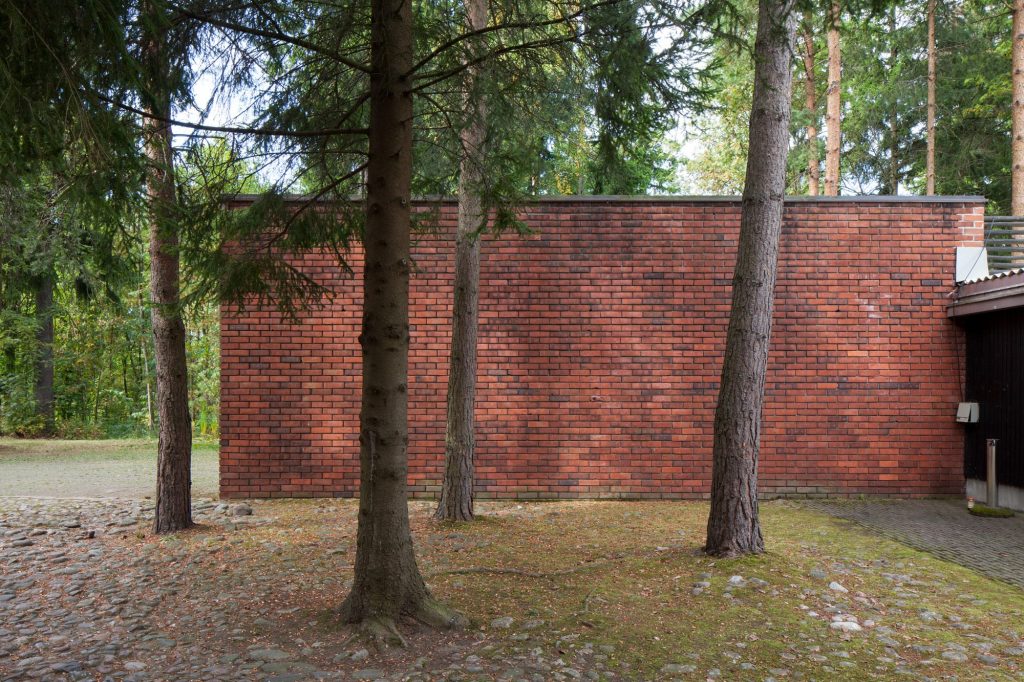
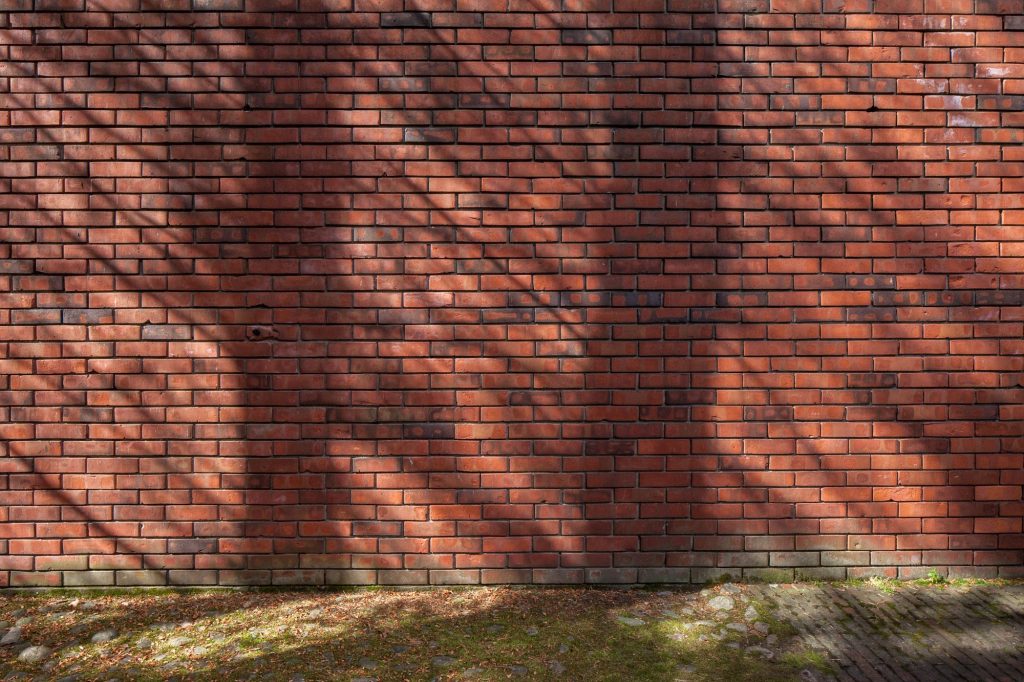
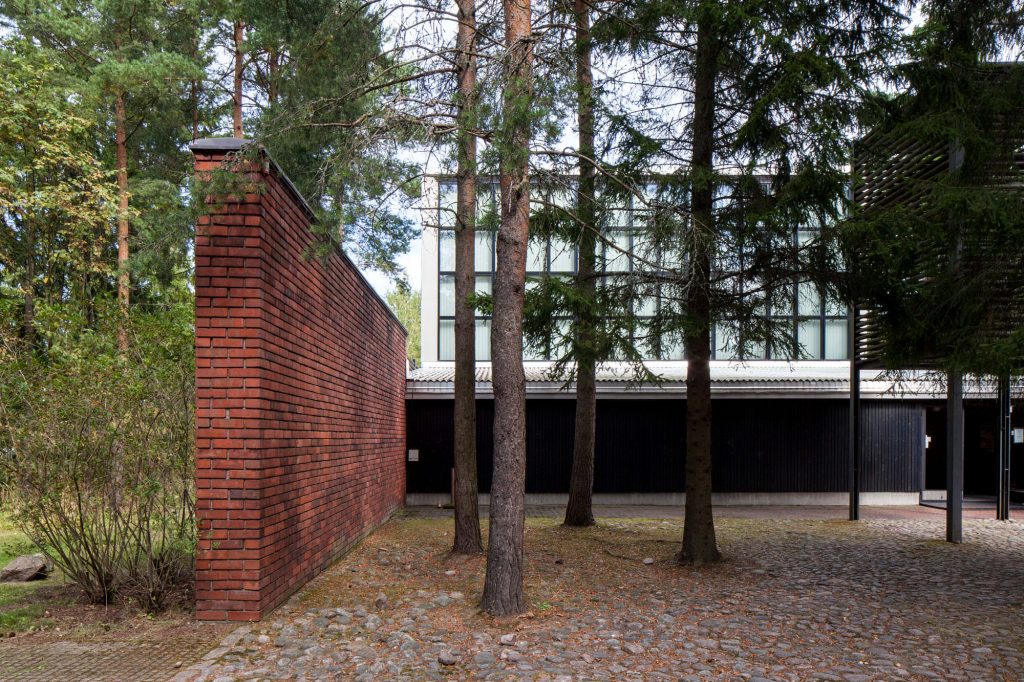

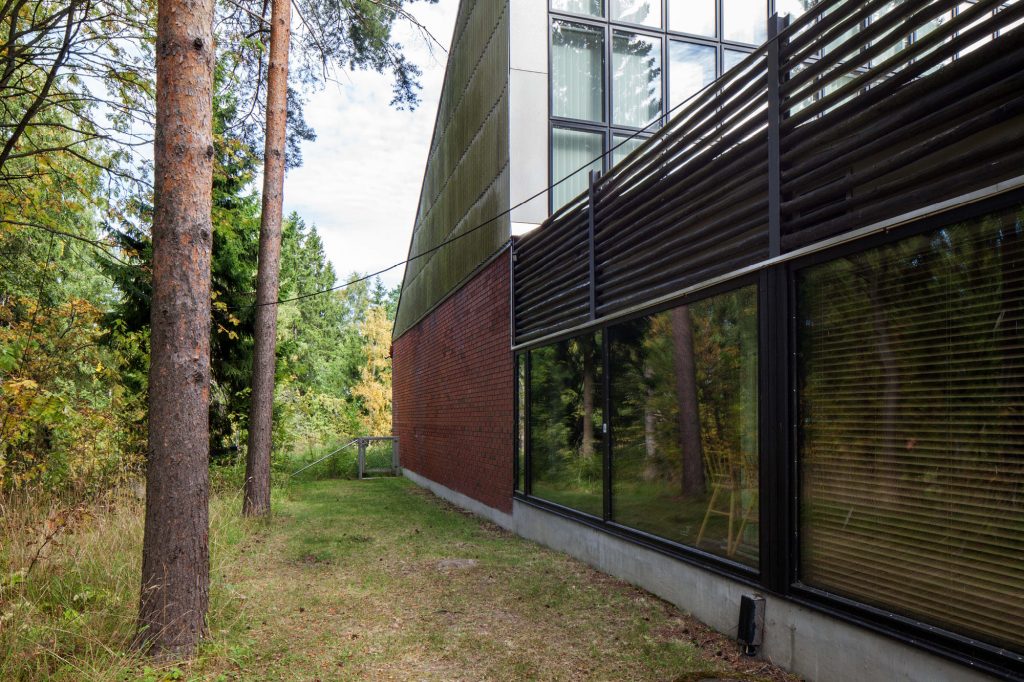
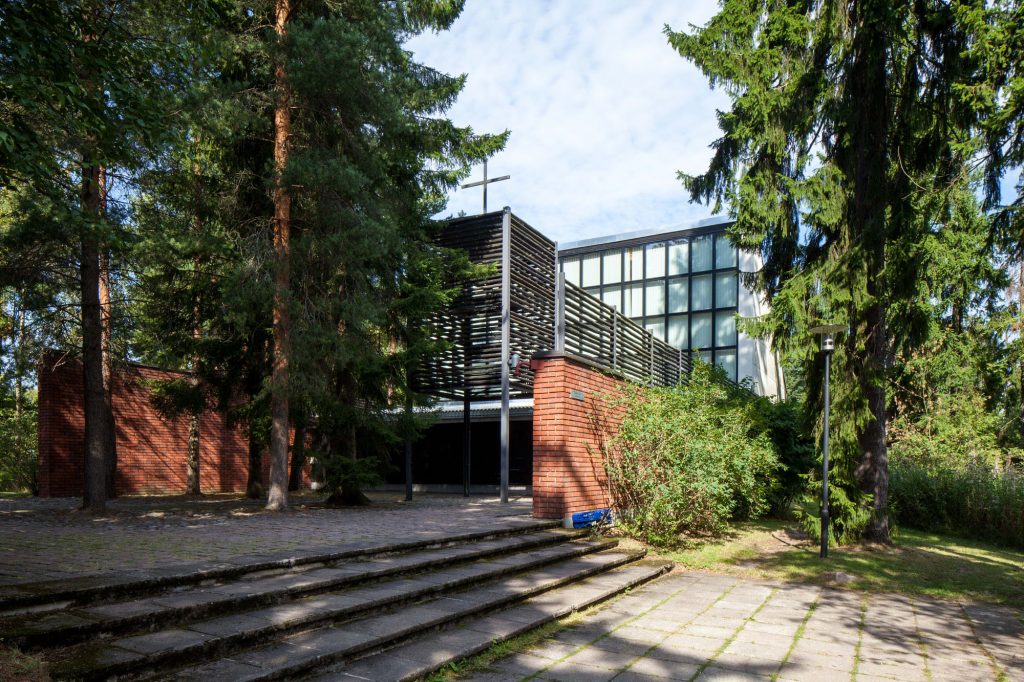
VIA:
Revista Arquitectura Coam
Tectonica
Divisare
